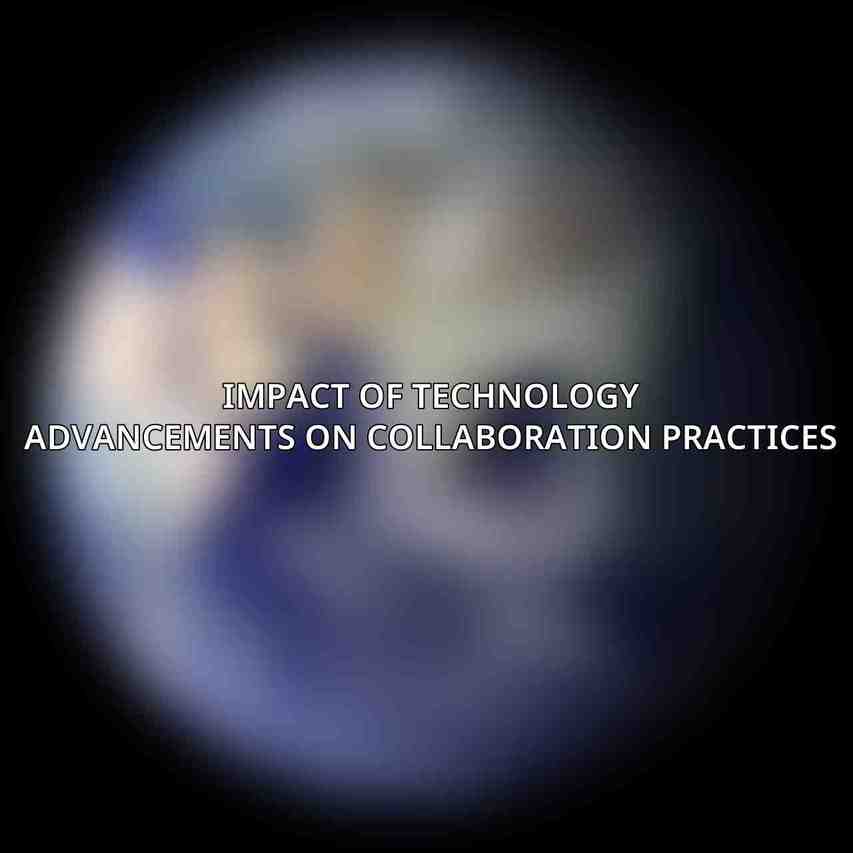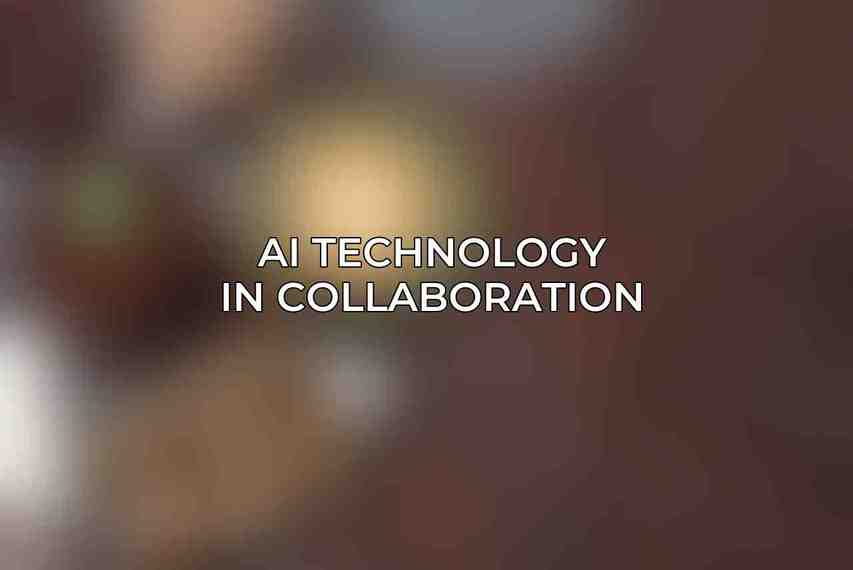The workplace collaboration world is continually evolving, driven by advancements in technology and changing work dynamics. Organizations are increasingly adopting digital solutions to enhance teamwork, communication, and productivity. Technology has become a key enabler of collaboration, facilitating seamless interactions among team members, regardless of their physical locations.
Overview of the evolving workplace collaboration world
Collaboration tools have shifted from traditional face-to-face meetings to virtual platforms that offer real-time communication and information sharing. This transformation has been accelerated by the rise of remote work and the need for flexible work arrangements. Digital collaboration tools have become essential for modern businesses to stay competitive and agile in this fast-paced environment.
Impact of technology advancements on collaboration practices

The integration of technology in collaboration practices has led to improved efficiency, streamlined processes, and enhanced connectivity. With the emergence of various software solutions, teams can now collaborate in real-time, share documents effortlessly, and coordinate projects seamlessly. Cloud-based tools have revolutionized the way teams work together, breaking down geographical barriers and enabling global collaboration.
Emerging Software Solutions
As technology continues to advance, new and innovative software solutions are transforming the way teams collaborate. Here are some of the prominent tools reshaping the collaboration world:
A. Cloud-based collaboration tools
- Microsoft Teams: A comprehensive platform that combines chat, video meetings, file storage, and app integration, enhancing team collaboration and communication.
- Google Workspace: A suite of productivity tools offering email, cloud storage, document editing, and collaborative features like real-time editing and commenting.
- Slack: Known for its instant messaging capabilities, file sharing, channel organization, and integration with third-party apps for seamless workflows.
B. Project management software
- Asana: Facilitates task tracking, team communication, project visualization, and progress monitoring to ensure project success.
- Trello: Utilizes a Kanban-style board for organizing tasks and projects visually, making it easy for teams to track progress.
- Jira: An agile project management tool with features for issue tracking, sprint planning, and team collaboration for software development teams.
C. Video conferencing solutions
- Zoom: Offers cloud-based video conferencing with features like screen sharing, recording meetings, and breakout rooms for interactive discussions.
- Microsoft Teams: Integrates built-in video conferencing capabilities within the collaboration platform, making it convenient for team meetings.
- Google Meet: Provides high-quality video and audio conferencing, screen sharing, and recording options for seamless virtual meetings.
AI Technology in Collaboration

Artificial Intelligence (AI) is revolutionizing collaboration by automating tasks, analyzing data, and providing valuable insights to enhance team efficiency and productivity.
A. Natural language processing (NLP)
- Transcribing voice calls and video meetings into text for easy reference and documentation.
- Generating meeting summaries and transcripts to capture key discussion points and action items.
- Automating tasks such as scheduling appointments and sending reminders to streamline workflow processes.
B. Machine learning (ML)
- Offering personalized recommendations for collaboration tools and resources based on individual preferences and usage patterns.
- Leveraging predictive analytics to identify trends and optimize collaboration processes for better outcomes.
- Implementing sentiment analysis to gauge team morale, engagement levels, and overall sentiment within the organization.
Impact on Workplace Culture
The integration of advanced collaboration tools and technologies has significantly impacted workplace culture, shaping the way teams interact, communicate, and collaborate.
A. Increased flexibility and remote work options
Remote work has become more prevalent, allowing employees to work from anywhere and collaborate effectively with their teams, irrespective of geographical boundaries.
B. Enhanced communication and knowledge sharing
Teams can now communicate in real-time, share information instantly, and collaborate on projects seamlessly, leading to improved knowledge sharing and cross-functional collaboration.
C. Improved productivity and employee satisfaction
By streamlining processes, reducing manual tasks, and enhancing collaboration efficiency, organizations have seen an increase in productivity levels and employee satisfaction, resulting in a more engaged workforce.
D. Challenges and considerations in fostering collaboration in a distributed workforce
Managing a distributed workforce comes with its challenges, such as ensuring effective communication, maintaining team cohesion, and addressing time zone differences. Organizations need to find the right balance between autonomy and collaboration to foster a cohesive and productive remote work environment.
Future Trends and Predictions
The future of workplace collaboration is poised to witness exciting advancements that will redefine how teams interact and work together. Here are some of the upcoming trends and predictions in collaboration technology: Learn more about Workplace Communication Strategies That Work
A. Augmented reality (AR) and virtual reality (VR) in collaboration
AR and VR technologies will create immersive collaboration experiences, enabling teams to work together in virtual spaces and interact with 3D models, enhancing creativity and innovation.
B. Immersive meeting experiences with holographic avatars
Holographic avatars will revolutionize virtual meetings, providing a lifelike presence and enhancing communication by making interactions more engaging and interactive.
C. AI-powered collaboration assistants
AI assistants will automate routine tasks, schedule meetings, provide intelligent insights, and facilitate smoother collaboration processes by leveraging machine learning and natural language processing technologies.
D. Blockchain for secure and transparent collaboration
Blockchain technology will ensure secure, transparent, and tamper-proof collaboration by establishing a decentralized system of record-keeping and verifying the authenticity of data shared among team members. Read more about this on Top Collaboration Tools for Remote Teams
The future of workplace collaboration is deeply intertwined with technological innovations that are reshaping the ways teams communicate, collaborate, and work together. Embracing these advancements is crucial for organizations to stay competitive, foster a culture of collaboration, and drive productivity in the digital era. As we look ahead, the outlook for workplace collaboration is promising, with an emphasis on leveraging AI, AR, VR, and blockchain technologies to create truly immersive and efficient collaboration experiences.
By embracing innovation and leveraging technology, organizations can empower their teams to collaborate effectively, regardless of physical locations, and thrive in an increasingly digital and interconnected world. The future of workplace collaboration is bright, offering endless possibilities for enhancing teamwork, boosting productivity, and driving success in the modern workplace world. You can find more information on How to Integrate Communication Tools with Project Management
Frequently Asked Questions
What are the key future trends in workplace collaboration?
Key future trends in workplace collaboration include increased remote work capabilities, AI-powered collaboration tools, virtual reality meetings, enhanced cybersecurity measures, and a focus on employee well-being.
How can businesses adapt to these future trends?
Businesses can adapt to these future trends by investing in digital collaboration tools, providing training on remote work best practices, implementing cybersecurity protocols, and fostering a culture of flexibility and communication.
What role will AI play in workplace collaboration?
AI will play a significant role in workplace collaboration by automating repetitive tasks, analyzing data to provide insights, improving decision-making processes, and enhancing employee productivity.
How can employers ensure effective communication in a remote work environment?
Employers can ensure effective communication in a remote work environment by using a mix of communication channels (email, video calls, chat tools), setting clear expectations, providing regular feedback, and promoting a culture of transparency. Check this blog on Building an Open Communication Culture with Software Solutions
What are the potential benefits of embracing these future trends in workplace collaboration?
Potential benefits of embracing these future trends include increased efficiency, higher employee engagement levels, improved decision-making processes, reduced operational costs, and a competitive edge in the market.

